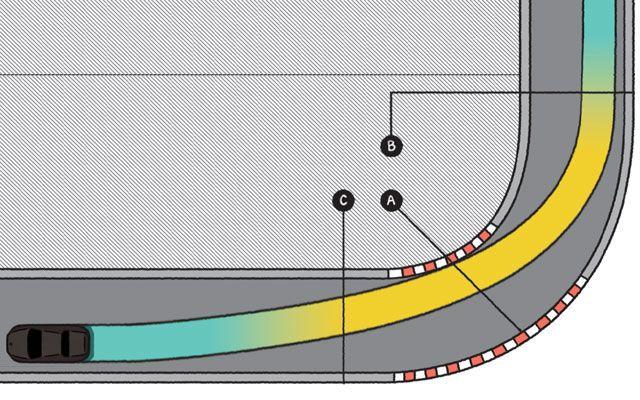Speed, it surely thrills a lot of us. But that is one thing that puts you at risk without even Realizing. Most of us who are believers of fast driving are also patients of complacency; except for the professional sportsperson, of course. While the conditions on a racing track congenial to racing and the racers adept, the roads are a wild place, after all. When we drive fast, there is a score of factors that may contribute to making the drive unsafe. The plan is, to keep safe and still enjoy your car.
A Few Helpful Tips on Driving Much, Much Too Fast
Here is what I do on weekends: I put on a crash helmet and ride fast cars with strangers and teach them how to drive on a racetrack. I am a high-performance driving instructor, and I teach the techniques that Formula One drivers used to get around a twisty racecourse. Anyone over 18 with a sporty car (or even a non-sporty one; it’s your money) can sign up to learn what happens when you get your Audi up to 120 or jam on the brakes as hard as they were meant to be jammed on. And while you should never drive to the grocery store the way we drive on the track.
the principles we teach can make you a better and more conscientious driver, And they’re fun.
When I instruct a track newbie, the first item of business is what we reverentially refer to as The Line (see below). The Line is simple in theory, but like using a saber to uncork the champagne it’s somewhat trickier in practice. Cars go faster in a straight line. The less you ask them to turn the faster they go. There-go, the fastest way through a turn is the one that rides the longest radius. When you’re driving on the street your line is pretty much determined for you by the Department of Transportation. But instead of hugging a corner, start at the outside of your lane and try to flatten out the arc of your turn with a little room you have. Slow down before the turn, not in the middle, and accelerate only when you’re coming out of it.
Then there’s the contact patch, the four little pieces of grippy real estate where the rubber meets the asphalt. Braking maximizes tire contact in the front, accelerating transfers it to the rear, and turning shifts it from side to side. Since your car is most stable when its weight is evenly distributed, it’s important to remember that the more you ask the vehicle to do one thing (turning), the less it can do another (braking or accelerating). Once they have that in mind, most of my novice students are astonished by their cars’—and their own—ability to maintain speed throughout a turn or to stop the car quickly when the situation demands it.
The most valuable exercise I do with my students involves vision; You have to look much farther ahead than your instincts tell you. That’s where you’ll see the effects of the driving decisions you make. When my students take their eyes off the hood and redirect them from the entry to the exit of the turn, their inputs become smoother, and, no surprise, their cars become faster. You can do the same thing on the street. Look where you want the car to go, not where it is.
Oh, and always wear your seat belt, But maybe not the helmet.

A THE LINE.
Racing turns should be as flat as possible to minimize steering and retain speed. As you approach a turn, position your car to the outside edge of the track for entry, or turn-in. At the apex of the turn, try to run over the road’s inside edge before moving back toward the outside on exit.
B BRAKING.
The approach to a turn is your brake zone. Racetrack braking is the opposite of street braking: You begin by hitting the brakes as hard as you can, then tapering off as you enter the turn. As you near the apex, your foot rolls smoothly off the brake and you apply maintenance throttle—just enough gas to maintain your speed.
C ACCELERATION.
When you’ve passed the apex, give it more and more gas as you unwind the wheel. Once you’re straightened out, your foot should be to the floor.
Driving Fast? Avoid these 6 Faux Pas:
Positioning Your Hands As You Like It
This is one of the biggest yet one of the most ignored mistakes that drivers make. Positioning your hands incorrectly on the steering wheel is a bad practice. However, when you are driving fast it becomes even more jeopardizing. When you take even one hand off the steering wheel, you lose the vital connection between both the front tires. The correct technique to steer a car is to keep hands at 9 and 3 positions at all times. Remember to come back to it, even if you have to cross the arms. It lets you decipher the activity of the front end and allows you to maneuver progressively. Even if you let your hands off, like on sharp turns, for the wheel to come back, you should resume position.
Playing Blaring Music
Studies prove that the louder the music the greater your reaction time. That is, evidently, a bad thing in case you come across a tricky situation on the road. Blaring music takes away your ability to focus. It also masks the sound of the engine and interferes with your judgment about speed and shift points. So, when you drive, keep the music light.
Not Looking Straight Ahead
Most forget to focus on the road far ahead while we are enjoying the speed. It causes a lot many accidents, even more than the wrong-way driving. Consciously raising your line of sight is the key. Look as far ahead as possible to keep the focus on the road. It will keep you aware of the traffic coming from ahead and in anticipating turns. More control means more balance on turns.
Incorrect Sitting Position
What we mostly look for is comfort. But, what should look for is the optimum reach of hands and legs along with optimum comfort. Depress the clutch to the max. Your legs should not be straight, and your wrists should rest on top of the steering wheel. However, the arms should be slightly bent too. Adjust your seat in such a way as makes all this possible.
Letting the Car Coast
Not using a trailing throttle is one of the biggest mistakes you can make while driving fast. You should always use either accelerator or brake, especially mid-corner. When you fail to do that and coast, the car will lose balance and the weight will shift around. Coasting puts you at massive risk because it reduces the ability to brake efficiently. It is also one of the habits that kill your car in the long run if you are accelerating right when you are coasting.
Moving at the Wrong Time on the Wrong Route
Trying your fast driving skills at the wrong time and the wrong route is a pretty bad idea. The idea of speeding is to move without much obstruction. So, you need to find a suitable time and route for that. Early mornings are always a safer bet for any route.
At Motion Automotive, our services are Speedy service with a smile and competitive pricing is the start, but our goal is to get you on the road, safe and assured for reliability.

